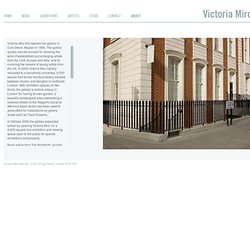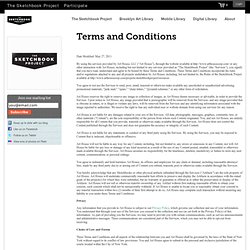

David Lynch. David Keith Lynch (born January 20, 1946) is an American film director, television director, visual artist, musician and occasional actor.

Known for his surrealist films, he has developed a unique cinematic style, which has been dubbed "Lynchian", a style characterized by its dream imagery and meticulous sound design. The surreal, and in many cases, violent, elements contained within his films have been known to "disturb, offend or mystify" audiences.[2] Over his career, Lynch has received three Academy Award nominations[3] for Best Director and a nomination for best screenplay.
Lynch has won France's César Award for Best Foreign Film twice, as well as the Palme d'Or at the Cannes Film Festival[4] and a Golden Lion award for lifetime achievement at the Venice Film Festival. Life and career[edit] Early life: 1946–1965[edit] Philadelphia and short films: 1966–1970[edit] Los Angeles and Eraserhead: 1971–1979[edit] The Sketchbook Project 2013. If you have any other questions, please visit our dedicated support website at support.sketchbookproject.comWhat is The Sketchbook Project?

The Sketchbook Project is a crowd-sourced library of over 30,000 sketchbooks (and counting) submitted by people of all ages and backgrounds from more than 135 countries. Anyone can add their voice to the collection by signing up to fill a Sketchbook Project book of their own to submit. The entire project is on view to the public as a permanent collection at Brooklyn Art Library, our storefront exhibition space in the heart of Williamsburg, Brooklyn, NY. What if I don’t sketch? We use ‘sketchbook’ as loose term for experimentation in creativity. Unique Value Project Idea: The Sketchbook Project - Art Cool Websites Personal Progress Unique Service or Value Project Ideas - art divine nature value project idea individual worth value project idea lds young women Personal Progress sketchbook project v. If you’re looking for a unique Value Project idea, check out The Sketchbook Project.

Whether you’re an established artist or a working mom with scant artistic ability (ahem) or a young woman looking for a fun way to complete a Personal Progress requirement, I’m telling you, this is a fantastic idea. Here’s how it works. You pick a theme and order a sketchbook. They mail it to you. You fill it with art, doodles or what have you. Your sketchbook will go on tour. Your sketchbook can be checked out at the sketchbook library. Your sketchbook gets its own bar code so you can see who’s looking at it. Now, how is that not completely awesome?
You don’t have to be an “artist” to participate. Gallery History. Victoria Miro Victoria Miro first opened her gallery in Cork Street, Mayfair in 1985.

The gallery quickly earned acclaim for showing the work of established and emerging artists from the USA, Europe and Asia, and for nurturing the careers of young artists from the UK. In 2000 Victoria Miro Gallery relocated to a sensitively converted, 8,000-square-foot former furniture factory situated between Hoxton and Islington in northeast London. With exhibition spaces on two floors, the gallery is almost unique in London for having its own garden, a beautiful landscaped area overlooking a restored stretch of the Regent's Canal at Wenlock Basin which has been used to great effect for installations by gallery artists such as Yayoi Kusama. In October 2006 the gallery expanded further by opening Victoria Miro 14, a 9,000-square-foot exhibition and viewing space open to the public for special exhibitions and projects.
Read article from The Architects' Journal Previous Next. Magazine. Fireflies on the Water from Yayoi Kusama. NY Arts Magazine - Home. CARA PHILLIPS - CV. 2008 February 18 « Ground Glass. The blogosphere is full of ‘best of’ lists and rankings.

The blog is a perfect venue for this type of information. So I thought it would be nice to create a women in the history of photography list. I rarely read an interview where a photographer, male or female, cites a woman as an influence. The exceptions is perhaps Diane Arbus. And I have always found the sources on this subject rather limited. I often wish I had more female mentorship and inspiration, but I guess it is out there if you are willing to look. Julia Margaret Cameron Camille Silvy Clementina, Lady Hawarden Alice Austen Doris Ulmann Gertrude Kasebier Alice Boughton Eva Watson-Schutze.
Art House Co-op. Date Modified: May 27, 2011 By using the services provided by Art House, LLC (“Art House”), through the website available at or any other interaction with Art House, including but not limited to any services provided as “The Sketchbook Project” (the “Services”), you signify that you have read, understand and agree to be bound by these Terms and Conditions.

These Terms and Conditions incorporate the rules and/or regulations attached to any and all projects undertaken by Art House, including, but not limited to, the Rules of the Sketchbook Project available at. Memoir. Background[edit] Historically, memoir has been defined as a subcategory of autobiography.

While the art of memoir is nonfiction and written from the first-person point of view (much like autobiography), memoir is differentiated in form from autobiography. Rather than summarizing a life in whole, the memoir offers a much more narrow form. An autobiography tells the story of a life, while memoir tells a story from a life. Memoir is more about what can be gleaned from a few years or a moment in the life of the author, than from the author's life as a whole. The term memoirs has often been used to describe works that are more properly defined as autobiography, than the literary memoir.
Early memoirs[edit] Memoir has been written since the ancient times, as shown by Julius Caesar's Commentarii de Bello Gallico, also known as Commentaries on the Gallic Wars. From the eighteenth century[edit]